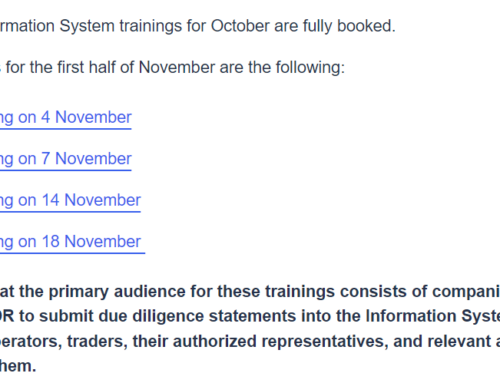
NEW DIRECTION FOR THE ECONOMY – MORE CIRCULARITY, INTELLIGENT SOLUTIONS AND SPARING USE OF RESOURCES
Source: EU Council
TAINA NIKULA: A NEW DIRECTION FOR THE ECONOMY – MORE CIRCULARITY, INTELLIGENT SOLUTIONS AND SPARING USE OF RESOURCES
Europe is looking for new ways of mitigating climate change. While cynics say this heralds a return to the dark ages of ‘make do and mend’, others believe this is now the start of a momentous shift to a new type of economy. At the October Environment Council, the environment and climate ministers of EU member states brought their own policy positions to the table and adopted Council conclusions on the circular economy prepared under Finland’s leadership.
Finland hastening progress towards circular economy
Finland is regarded as a model country when it comes to the circular economy – largely thanks to the consistent work of the Finnish Innovation Fund Sitra. Finland decided to bring the circular economy debate to the agenda for EU discussion, as actions are also needed at EU level. What’s more, in the debate on the sustainable use of natural resources and reducing harm from plastics it is clear that global initiatives and agreements are called for.
In the spring we began to discuss the next steps for Europe. A start was made in 2015 with the EU’s Circular Economy Action Plan, which pushed forward an ambitious policy on waste as well as measures to avoid, reduce and replace plastics. But Finland and many others, too, felt that this is not enough.
Circular economy offers solutions for the sustainability crisis
The scenarios are clear. The circular economy offers solutions both for achieving climate objectives and for protecting biodiversity. Measures to promote a circular economy could reduce industrial carbon dioxide emissions in Europe by around half by 2050. To protect biodiversity we need not only improved housekeeping for natural resources but also nature-based solutions.
So, what then is the logic behind a circular economy?
Resources are seen as being only ‘on loan’ to us, which means they must be used wisely.
The useful life of products must be extended significantly, and new uses should be devised for resources discarded or taken out of use.
New service concepts, digital solutions and sharing will all help make everyday life easier, but without having to own things.
Eco-design principles – already familiar in energy-using products – should be mainstreamed in all products in the future.
Natural resources and materials come with a price, and curbing their overconsumption is possible with economic instruments. Such instruments can also be used to encourage the switch to materials that are of lower value or less environmentally detrimental.
Need for long-term circular economy strategy
These goals were discussed at the Informal Meeting of Environment/Climate Ministers in July, and those discussions then fed into the Council conclusions on the circular economy (More circularity – transition to a sustainable society). The conclusions were adopted at the Environment Council on 4 October.
The environment ministers recommended the drawing up of a long-term strategy for the circular economy with the aim of stimulating a systemic transition. To hasten the transition, it is crucial to have in place not only legislation and funding but also new initiatives and business models in different sectors and industries that can be used for reducing the consumption of materials and for extending the life of materials. It is important to extend the useful life of products through, for instance, regular care and repair and greater reuse, before finally recycling materials for use in new products. Consumption should be based on careful consideration and intelligent solutions.
Key sectors under scrutiny and Europe to be first carbon neutral continent
One idea raised by the environment ministers is to draft strategies for key sectors where – just as in the plastics strategy – measures would be determined for improving the sustainability of the entire chain. Measures are needed especially for the construction, textiles, mobility, food and electronics sectors. Most of the materials in the textiles sector, for example, are virgin raw materials, of which only a fraction currently end up being recycled. The entire sector’s climate impacts are greater than aviation and shipping emissions combined. Meanwhile, half of the world’s raw materials are used for construction, 35% of greenhouse gas emissions are generated by the built environment, and 30% of all waste is created in the construction sector. A circular economy would mean a considerable reduction in waste and emissions and would further the adoption of sustainable solutions.
The policy positions of the environment ministers are in line with European Commission President-elect Ursula von der Leyen’s plan to make Europe the first climate neutral continent. To put this into place, von der Leyen has announced that during her first 100 days in office the Commission will prepare an action plan, a European Green Deal. This is likely to incorporate an action plan for the circular economy.
Taina Nikula, Ministerial Adviser, Ministry of the Environment
Related Posts
Contact
EUROPEAN ORGANISATION
OF THE SAWMILL INDUSTRY AISBL
Rue Montoyer 24/box 20
BE-1000 Brussels
Tel.: +32 2 287 08 68
Email: info@eos-oes.eu



